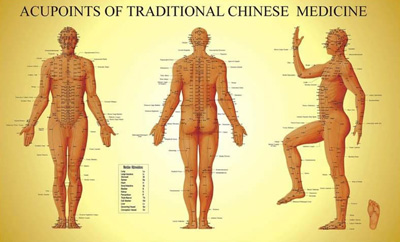“My name is Paul Ledroit. I am a lawyer and very skeptical of alternative medicine. However when...Read more
Acupuncture & TCM
 Acupuncture is a unique, theraputic method involving the insertion fo single use only, extremely thin steel acupuncture needles into the acupoints along the meridians to prevent and treat a variety of ailments.
Acupuncture is a unique, theraputic method involving the insertion fo single use only, extremely thin steel acupuncture needles into the acupoints along the meridians to prevent and treat a variety of ailments.
Acupuncture is a safe and effective therapy for many ailments and is one of the oldest natural healing therapies, having been practiced for thousands of years since its development in China; over the centuries acupuncture has helped millions of people. The effectiveness of acupuncture has been recognized by the World Health Organization of the United Nations (WHO) with their identification of over 40 medical conditions that can be successfully treated with acupuncture.
Meridians and Collaterals are an important part of Traditional Chinese Medicine, especially acupuncture. Meridians circulate vertically and are distributed in deeper layers; collaterals are a branch of meridians that circulate horizontally and diagonally in shallower layers. Both meridians and collaterals function together to link the internal organs to external body. This forms a corresponding network within the whole body.
There are 12 regular meridians in the body which pair up with their related Yin or Yang organs. Meridians and collaterals serve as routes for Chi (vital energy) and blood, Yin and Yang, keeping the whole body (body and mind) operating as a whole ina harmoniously well-balanced condition.
Acupoints are the specific sites through which the Chi of the zang-fu organs and meridians are transported to the body surface. They provide "access points" for directly affecting the flow of Chi (vital energy). In acupuncture treatment, proper techniques are applied on the acupoints to prevent and treat diseases.
Of the may acupoints, there are the 409 standard acupoints which are mostly distributed along the 12 regular meridians and the Du and Ren meridians. A skillful and accurate location of acupoints by the doctor enhances the clinical effects of acupuncture.
The science of acupuncture is an important component of Traditional Chinese Medicine (TCM), which has its own complete medical system. After using both the traditional and modern medical diagnostic methods, the doctor will determine particular methods of treatment ans specific acupuncture prescription for the individual according to the theories of : chi/blood; yin/yang; the five elements; zang-fu organs; meridians/collaterals; medical etiology; pantheogenesis; and other theories.
How acupuncture works: the fuction of acupuncture is to: change the pattern of the individual's flow of Chi through the Meridians and Collaterals; adjust deficiencies and excesses of Chi, blood, Yin-Yang; regulate organ function; increase immunity; and more.
Explained in the terms of Western medicine, acupuncture serves to stimulate the central nervous system such that all physiological processes of the organism are adjusted. Research has shown how acupuncture can control pain in two ways:
1. "gate control theory" explains how pain fibres in the spinal cord are blocked by acupuncture
2. acupuncture stimulates the relelase of morphine-like substances called endorphines, which are natural and powerful painkillers. The more treatments are recieved, the more endorphines are released.
The effectiveness of acupuncture is strongly dependent upon:
1. thorough and precise Chinese medical diagnosis
2. the best prescription of acupoints, varying according to change in patient's condition
3. accuracy in location of points; and
4. needling skills and techniques of the doctor
In some cases, how the doctor focuses his or her own Chi (vital energy) in performing acupuncture can affect the quality of treatment. The practitioner's level of education and knowledge have the greatest influence on the success of the outcome.
A professional and qualifies Doctor of Acupuncture and Chinese Medicine must have at least five years of full-time study in a college of Chinese Medicine in addition to one year of internship






